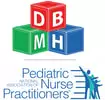Gender Dysphoria
|
Adolescents and adults
Must have lasted for at least 6 months and must include at least 2 of the following 6 criteria:
Specify whether the condition is occurring in conjunction with a disorder of sex development and, if so, should code that disorder as well. Specifier
|
Children
Must have lasted for at least 6 months and must include at least 6 of the following 8 criteria, with the first criterion being mandatory:
|
Assessment & Treatment
|
Issues and therapies:
|
Possible surgeries, procedures:
|
Position Papers
- Standards of Care for the Health of Transsexual, Transgender, and Gender-Nonconforming People (World Professional Association for Transgender Health, 2011)
- Good practice guidelines for the assessment and treatment of adults with gender dysphoria (Royal College of Psychiatrists, 2013)
- Report of the APA Task Force on Treatment of Gender Identity Disorder (Byne et al, 2011)
Articles
- International Journal of Transgenderism
- The Health of Lesbian, Gay, Bisexual, and Transgender People: Building a Foundation for Better Understanding (IOM, 2010) -- free
- WPATH's Transgender Health Bibliography
Resources
|
Organizations:
|
